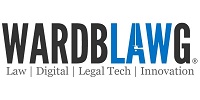In today’s fast-paced business environment, the importance of safety and compliance cannot be overstated. One of the most effective ways to ensure that your projects meet these requirements is by using risk and method statement templates. These templates not only streamline the hazard identification and risk assessment process but also offer a standardised approach that can be tailored to fit the unique demands of your industry.
The Benefits of Standardised Templates
Standardised risk and method statement templates bring a multitude of benefits to any organisation. Firstly, they provide consistency across projects, ensuring that all necessary safety measures are considered and documented. This consistency helps to reduce errors and omissions, leading to safer working environments and more efficient project execution.
Another significant advantage is the time-saving aspect. With a standardised template, much of the groundwork is already laid out. This allows project managers and safety officers to focus on the specifics of the project rather than starting from scratch each time. Furthermore, these templates are often designed to comply with industry regulations, making it easier to meet legal requirements and avoid potential fines or penalties.
Adapting Templates to Industry-Specific Needs
While the benefits of using standardised templates are clear, it’s essential to recognise that each industry has its own set of risks and challenges. Therefore, it’s crucial to adapt these templates to reflect the specific hazards and regulatory requirements of your sector.
For instance, in the construction industry, risk and method statement templates need to address a wide range of physical hazards, such as working at heights, heavy machinery, and electrical work. By customising the template to include these specific risks, you can ensure that all relevant safety measures are in place.
In contrast, the healthcare industry may focus more on biological hazards, patient handling, and the safe disposal of medical waste. A standardised template can be adapted to cover these concerns, ensuring that staff are aware of the risks and the methods to mitigate them.
Flexibility and Customisation
The true strength of risk and method statement templates lies in their flexibility. While they provide a structured framework, they are also highly editable. This means that regardless of your industry, you can add, remove, or modify sections to suit the particular needs of your projects better.
For example, a manufacturing business might need to include specific protocols for handling hazardous materials or operating complex machinery. By customising the template, you can ensure that all relevant risks are assessed and appropriate methods are outlined to manage them effectively.
Conclusion
In conclusion, standardised risk and method statement templates offer a reliable foundation for ensuring safety and compliance across various industries. However, their true value is unlocked when they are customised to meet the specific demands of your sector. By taking the time to adapt these templates, you can create a tailored risk management tool that not only meets regulatory requirements but also enhances the overall safety and efficiency of your projects.

